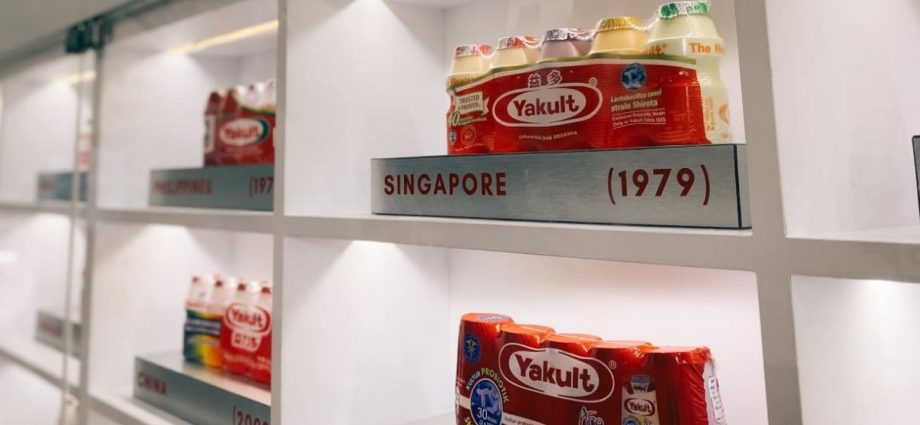
There are more than 10 steps in the manufacturing process, which happen like clockwork, said Mr Yap.
“If we want to build a factory in any country, we have a department to go to that country. So everything is the same – all operators are able to work in any Yakult factory, because the layout and flow, everything is the same,” he told CNA.
First, the skim milk powder is dissolved in water around 50 to 55 degrees Celsius to make a milk solution in the dissolving tank.
Then the milk is sterilised with heat before being transferred to a culture tank, where it is cooled to 37 degrees Celsius. The L. paracasei strain Shirota bacteria – a lactic acid bacteria strain – is added at this stage.
After fermentation, the milk becomes sour and is transferred to a storage tank. Syrup is added to balance out the sourness of the milk.
The concentrated Yakult solution is then transferred to a mixing tank and diluted with sterilised water. Natural flavours and permitted colouring are also added.
This mixture is transferred to a filling tank.
While the drink is being made, Yakult’s plastic bottles are moulded by a machine. These bottles are sucked into a duct with a clean air blower and brought to the bottle storage tank.
The empty bottles are released onto a circular selector which places them in an upright position before being sent to the printing machine.
The printing machine then imprints the Yakult logo and product information onto the empty bottles using “instant-dry” red ink.
These printed bottles are then sent to the filling machine, where the Yakult mixture is stored.
After being filled, bottles are sealed with an aluminum foil that shows the use-by date.

